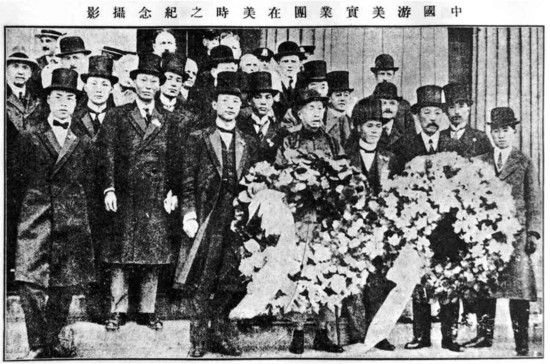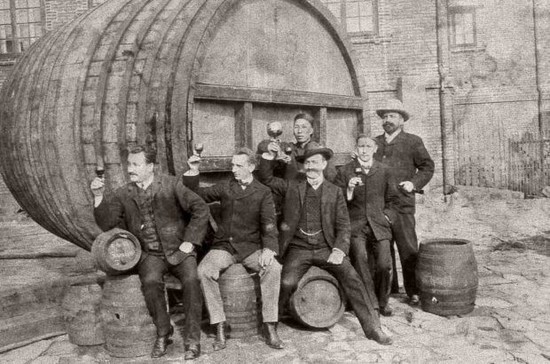Promotional feature – part of Decanter's China supplement October 2024

The late 19th century was eventful for the wine world. Brothers Jaime and Miguel Torres Vendrell founded Bodegas Torres in Spain in 1870, and Ridge Vineyards planted its first vines on Monte Bello in California in 1892. Meanwhile, the phylloxera crisis was slowly coming to an end in Europe.
In the Far East, entrepreneur Zhang Bishi built China’s first modern winery in 1892. When aged 17, he had travelled to Southeast Asia and built a fortune in land reclamation, shipping and mining which, at its peak, was said to be greater than the total income of the then Qing government.
Zhang encountered grape wine for the first time in 1871 at the French Consulate in Batavia (Jakarta), Indonesia, and was inspired. After extensive research, he chose Yantai, in the Shandong Peninsula, where wild grapes flourish along China’s eastern coast, to establish his own wine estate.
It took Zhang three attempts to find a winemaker for his winery, which he named Changyu, meaning ‘wealth and thriving success’. The first candidate, an Englishman, died during the long voyage; the second, from the Netherlands, was dismissed after two years due to incompetence.
Finally, Baron M von Babo, Vice-Consul of the Austro-Hungarian Empire in Yantai, and a member of a winemaking family, recommended himself. The first Changyu wines and brandies were made under his watch.

A trailblazer in wine
Despite its creation during a turbulent era in Chinese history, Changyu is the nation’s vanguard in viticulture and oenology.
In its early years, the winery imported 124 Vitis vinifera varieties from Europe and grafted them onto the indigenous Vitis amurensis (locally known as ‘mountain grapes’) so they could survive the local climate. Changyu was also the first to come up with the now widely used Chinese names of many international varieties.
At the winery, Changyu sourced oak staves from Austria and Italy for barrel production and imported wine presses and pot stills from Europe. Zhang also created China’s first glass-bottle factory, boasting an annual capacity of one million bottles, using equipment bought from France, Germany and Japan.
In 1912, the Qing Dynasty fell, ending 2,000 years of imperial rule in China. As the nation grappled with creating a new social order, in 1915, Zhang, then aged 74, led a delegation of Chinese industry leaders to the Panama-Pacific World Expo in San Francisco, California. Chinese wines and brandies were showcased on the international stage for the first time – with encouraging results. Changyu’s Chefoo Red Rose (made from an indigenous red grape), along with a dry Riesling, Koya Brandy and a Gewürztraminer-based Vermouth, each received a Grand Prize, the Expo’s top accolade.
A national icon
In the 1930s, wines from Changyu were fashionable among social elites in Shanghai – a Western-occupied city briefly shielded from the wars and turmoil affecting the rest of China. Changyu released China’s first dry red wine made with Cabernet Gernischt in 1931. Xu Wangzhi, then managing director of Changyu, named the wine Jie Bai Na (English name: Noble Dragon). Translated, the poetic name implies that the brand is keeping an open mind by fusing elements of Chinese and Western culture, just as the ocean embraces all. Noble Dragon remains one of Changyu’s flagship wines to this day.
In October 1949, with the founding of the People’s Republic of China, Changyu wines were served at the national banquet celebrating the victory of the Chinese people after more than a decade of war. In 1954, Premier Zhou Enlai gifted Changyu brandies to foreign leaders at the Geneva Conference, a historic event that significantly influenced the post-war international order, further cementing Changyu’s status as the nation’s premier brand.
In 1953, Chen Puxian took on the role of chief winemaker at Changyu, a position she held for 40 years. One of China’s first-generation women winemakers, she was instrumental in several technical breakthroughs for the nation’s wine industry. Her Noble Dragon Laboratory, founded in 1982, refined the production process for Changyu’s flagship dry red wine. This expertise was shared with domestic producers, paving the way for more high-quality premium dry red wines from China.

Pioneering the future
Over the past 40 years, as more regions began cultivating wine grapes in pursuit of top terroirs across China, Changyu expanded its operations beyond Shandong, starting projects in Ningxia, Beijing, Liaoning, Xinjiang and Shaanxi. Its large-scale operations played a significant role in revitalising these rural economies, particularly in areas with less fertile land.
For more than 20 consecutive years, Changyu has held the number one market share in China. It has also invested in wineries and distilleries in France, Spain, Chile and Australia. It now owns 14 properties around the world, with a distribution network across more than 80 countries.
As the wine world increasingly values regional-specific qualities, Changyu has been trailing native yeasts, Chinese oak barrels and Chinese amphoras in a bid to express Chinese terroir. It is also experimenting with less familiar grape varieties to better suit the nation’s vastly diverse climatic conditions.
Now, 132 years on from its founding, and facing a market far more complex, what does the future hold for Changyu?
One thing is certain: as it has blazed a trail through every historical turn, the people behind this legendary brand have always demonstrated the wisdom and resolve to thrive.
Changyu estates – four to know
Longyu Estate – Yinchuan, Ningxia
 Wines from the Longyu Estate are among the most recognised Chinese wines in overseas markets, with a presence in restaurants listed in both the Michelin guide and Black Pearl guide.
Wines from the Longyu Estate are among the most recognised Chinese wines in overseas markets, with a presence in restaurants listed in both the Michelin guide and Black Pearl guide.
Golden Icewine Valley – Huanren, Liaoning
 The first vineyards dedicated to ice wine production were only planted in Huanren in 2001, and – as it has in so many other emerging wine regions across China – Changyu was one of the earliest producers to establish a presence here.
The first vineyards dedicated to ice wine production were only planted in Huanren in 2001, and – as it has in so many other emerging wine regions across China – Changyu was one of the earliest producers to establish a presence here.
Chateau Afip – Miyun, Beijing
 Located in the Huaimi Basin of Miyun, Beijing, Chateau Changyu Afip is perhaps the Changyu estate most frequently featured at Chinese state banquets.
Located in the Huaimi Basin of Miyun, Beijing, Chateau Changyu Afip is perhaps the Changyu estate most frequently featured at Chinese state banquets.
Chateau Tinlot – Yantai, Shandong
 Based in Yantai, Shandong, home to the headquarters of the Changyu wine company, Chateau Changyu Tinlot is named in honour of the late Robert Tinlot, former Director General of the OIV (International Organisation of Vine and Wine).
Based in Yantai, Shandong, home to the headquarters of the Changyu wine company, Chateau Changyu Tinlot is named in honour of the late Robert Tinlot, former Director General of the OIV (International Organisation of Vine and Wine).

Discover more about Changyu
Connect on Instagram
All rights reserved by Future plc. No part of this publication may be reproduced, distributed or transmitted in any form or by any means without the prior written permission of Decanter.
Only Official Media Partners (see About us) of DecanterChina.com may republish part of the content from the site without prior permission under strict Terms & Conditions. Contact china@decanter.com to learn about how to become an Official Media Partner of DecanterChina.com.




Comments
Submit